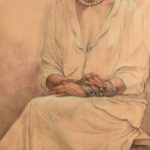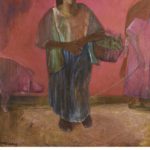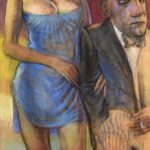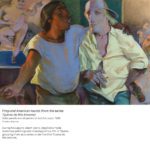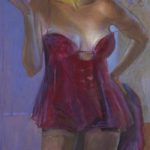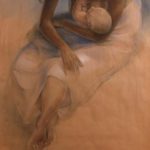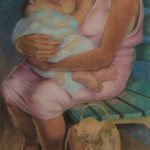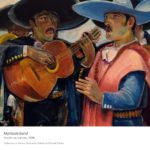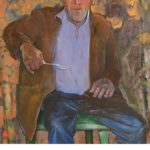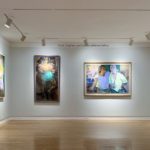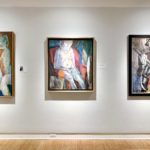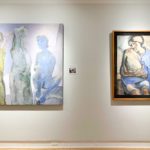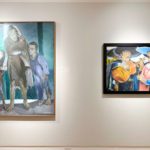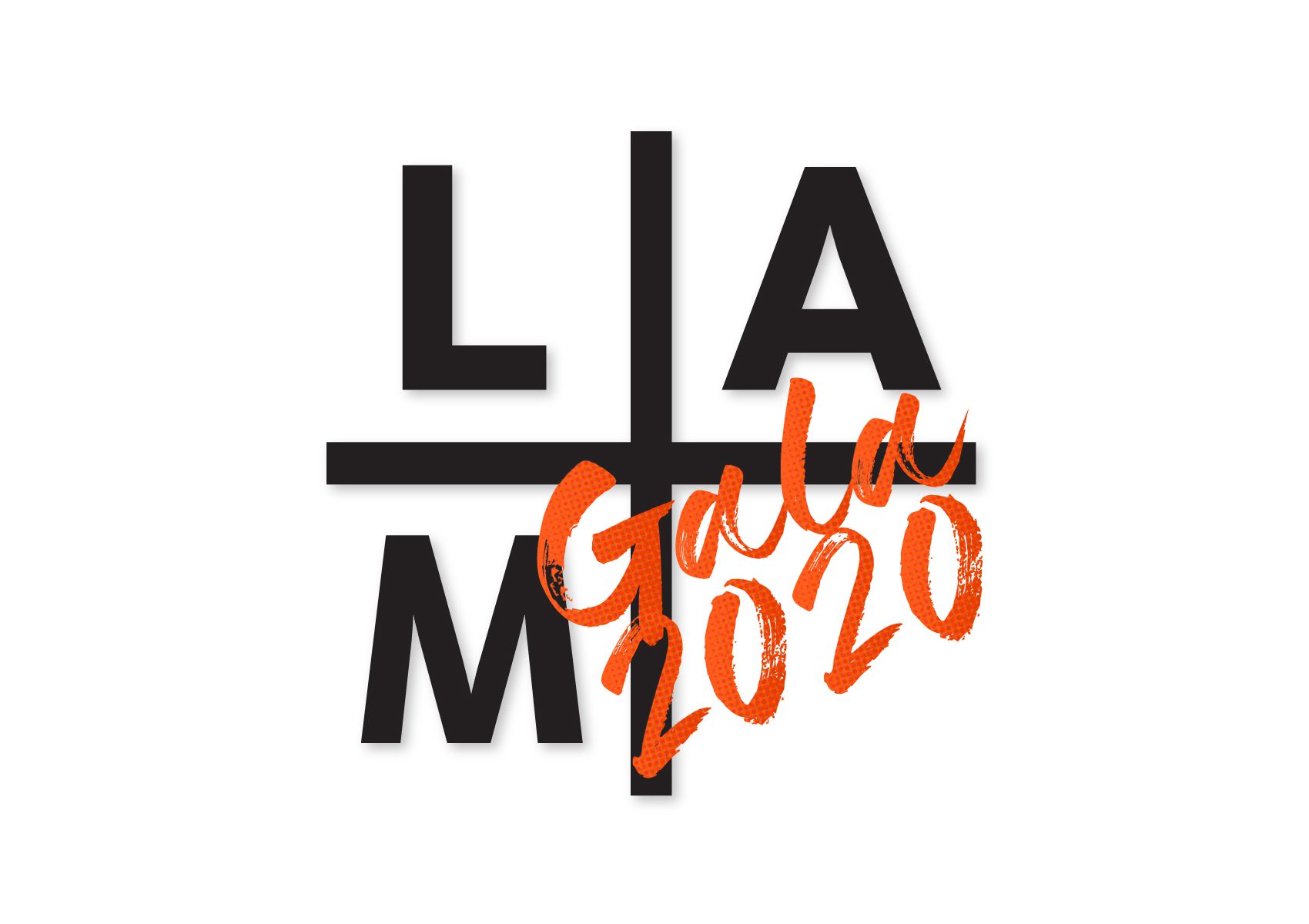This exhibition brings together a representative group of paintings and drawings made by the Mexican artist Artemio Sepúlveda while living in Laguna Beach. Drawn mostly from local private collections, they range from life-drawings and sensitive portrait studies to expressionistic paintings of prostitutes in Tijuana. It is the first exhibition of Sepúlveda’s work in the United States since his return to Mexico twenty years ago.
Born in 1935, Sepúlveda came from a working-class family living in the mining town of Nueva Rosita, Coahuila, near the border with Texas. His father was a miner and active trade unionist who seems to have instilled in him a keen sense of social injustice. In 1949 the family moved to Mexico City in search of a better life. There, having shown a burgeoning artistic talent, the young Sepúlveda won a scholarship to the Escuela Nacional de Pintura, Escultura y Grabado, known as “La Esmeralda.” The co-founder of the school, Carlos Orozco Romero, took him under his wing as an assistant after his studies were over. He left Orozco’s studio in 1955 determined to pursue a career in art whether he could make a good living or not. For a period in the later 1950s he lived at the Casino de la Selva in Cuernavaca, paying for humble board and lodging with paintings and murals. He came to maturity as an artist under the guidance of the renowned Mexican muralist David Alfaro Siqueiros, working for a time as his assistant, and assimilated the influence of modern painters from Picasso to the German Expressionists. From 1962 he was associated with Nueva Presencia, a group of fellow figure-painters working in expressionistic styles.
During the 1960s and 70s Sepúlveda showed his work in galleries in Los Angeles and San Francisco as well as Mexico. In 1977, encouraged by the positive reception of his work in California, he moved to Laguna Beach, settling for a while in Laguna Canyon. He came with his American wife, Victoria, and their children, Anastasia and Demetrio, but the couple soon parted company and the children stayed with their mother. Sepúlveda would remain in Laguna until 1999. For much of the time he lived a Spartan life in a studio behind the house of friend and fellow artist María Bertrán at 448 Myrtle Street. A new companion, a young woman of Asian descent named Pamela, frequently sat for him as a model. During his Laguna Beach years he taught at the Laguna Beach School of Art (now Laguna College of Art and Design). He sold his work at the Festival of Arts–where he was a sometimes controversial presence–the Fine Arts Gallery on Lumberyard Plaza, and the Diane Nelson Gallery.
Sepúlveda is still active as a painter and lives modestly in a rural community outside San Miguel de Allende. Although he is represented in numerous private and public collections, notably the Museo de Arte Moderno in Mexico City—and retains a circle of dedicated admirers, some of whom were his students–this passionate, unworldly bohemian has received relatively scant recognition, especially outside his native country. He is an important figure in the story of modern art in Southern California, and the museum is proud to showcase the work of his richly creative Laguna Beach years.
For their kind support of the exhibition, the museum is grateful to Genny Boccardo-Dubey and Frank Dubey, the Tellez Family, Elaine and Richard Frazee, Jim Keeshen and Helena Keeshen, and Gail and Ron Waters.
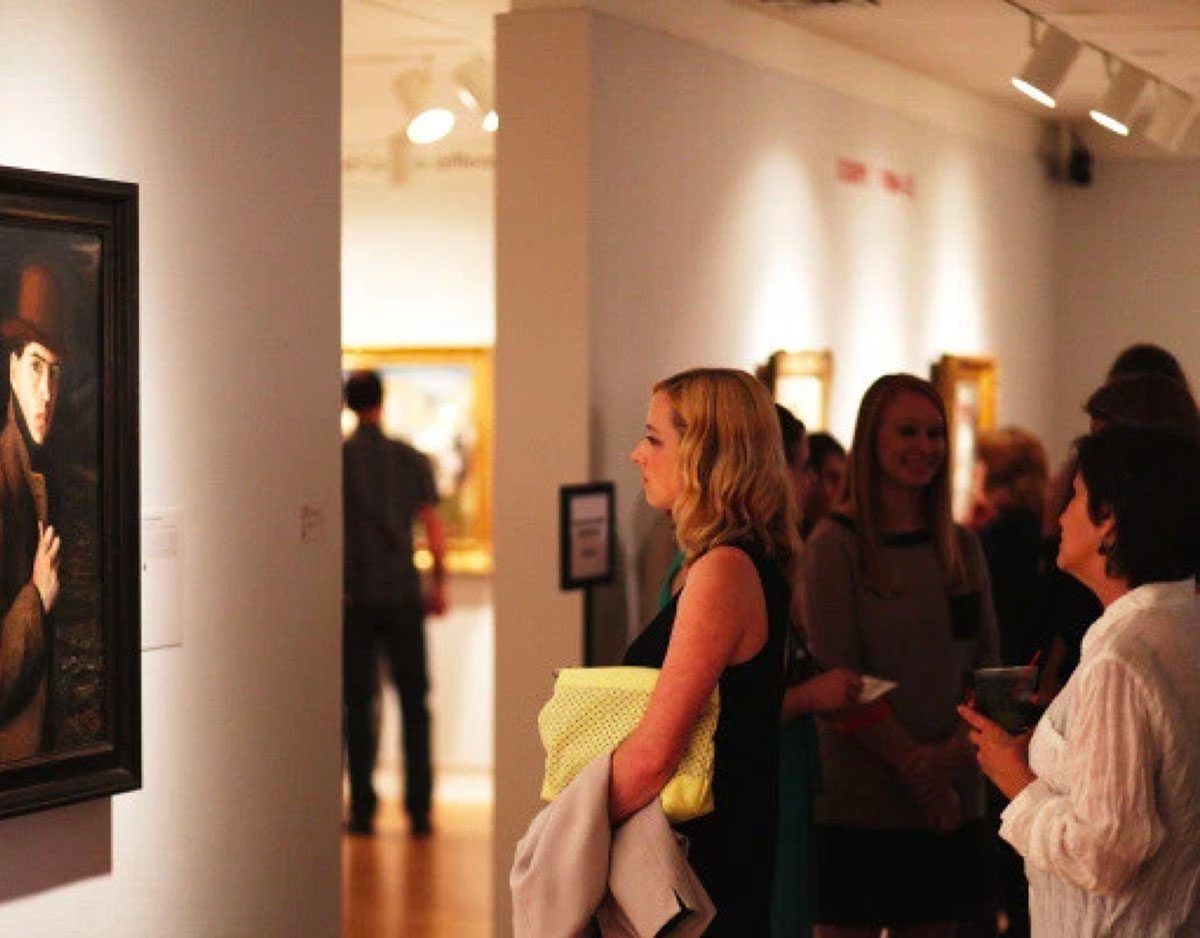
Subscribe To Our Newsletter
Receive news about collections, exhibitions, events, and more.








